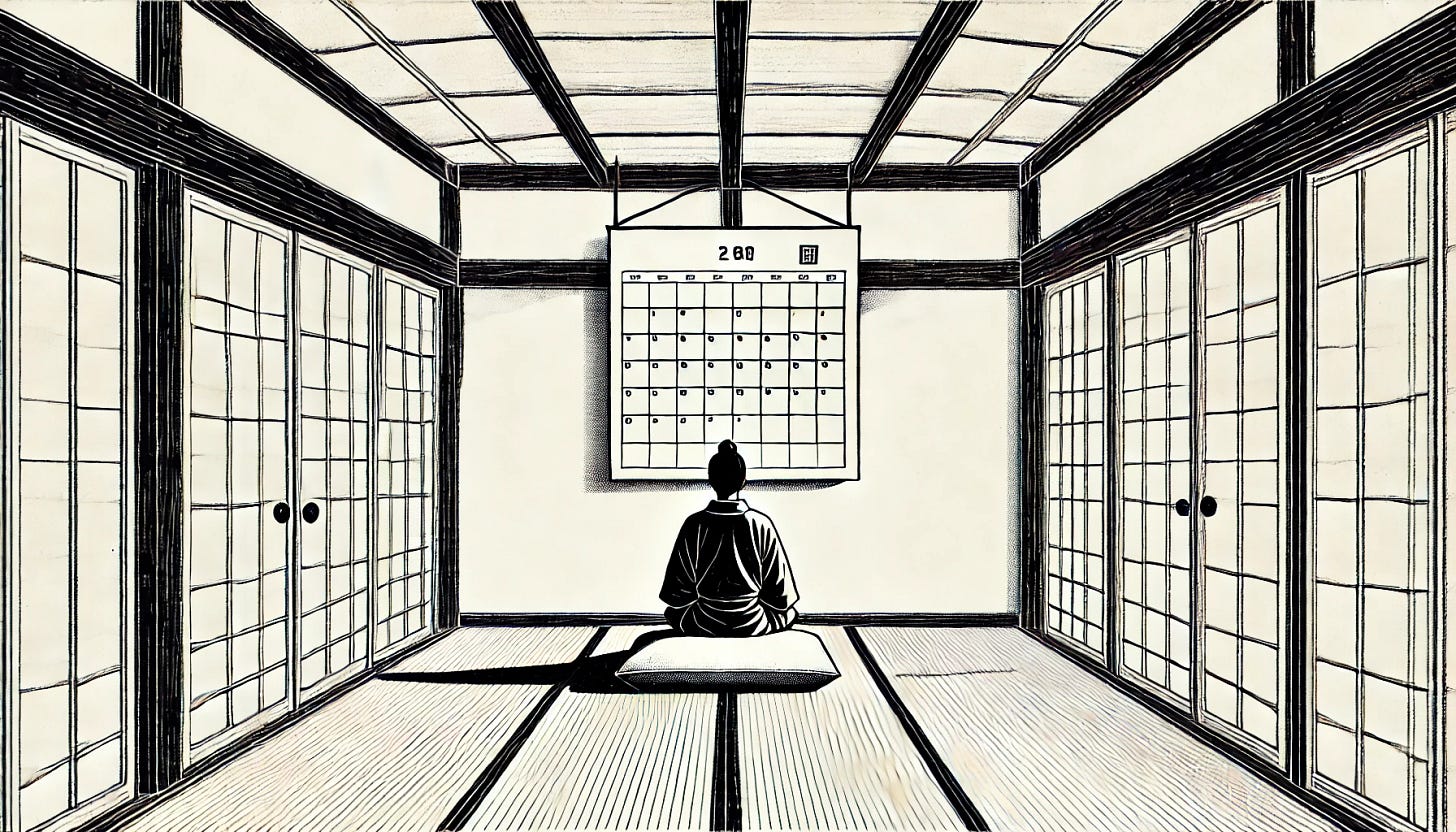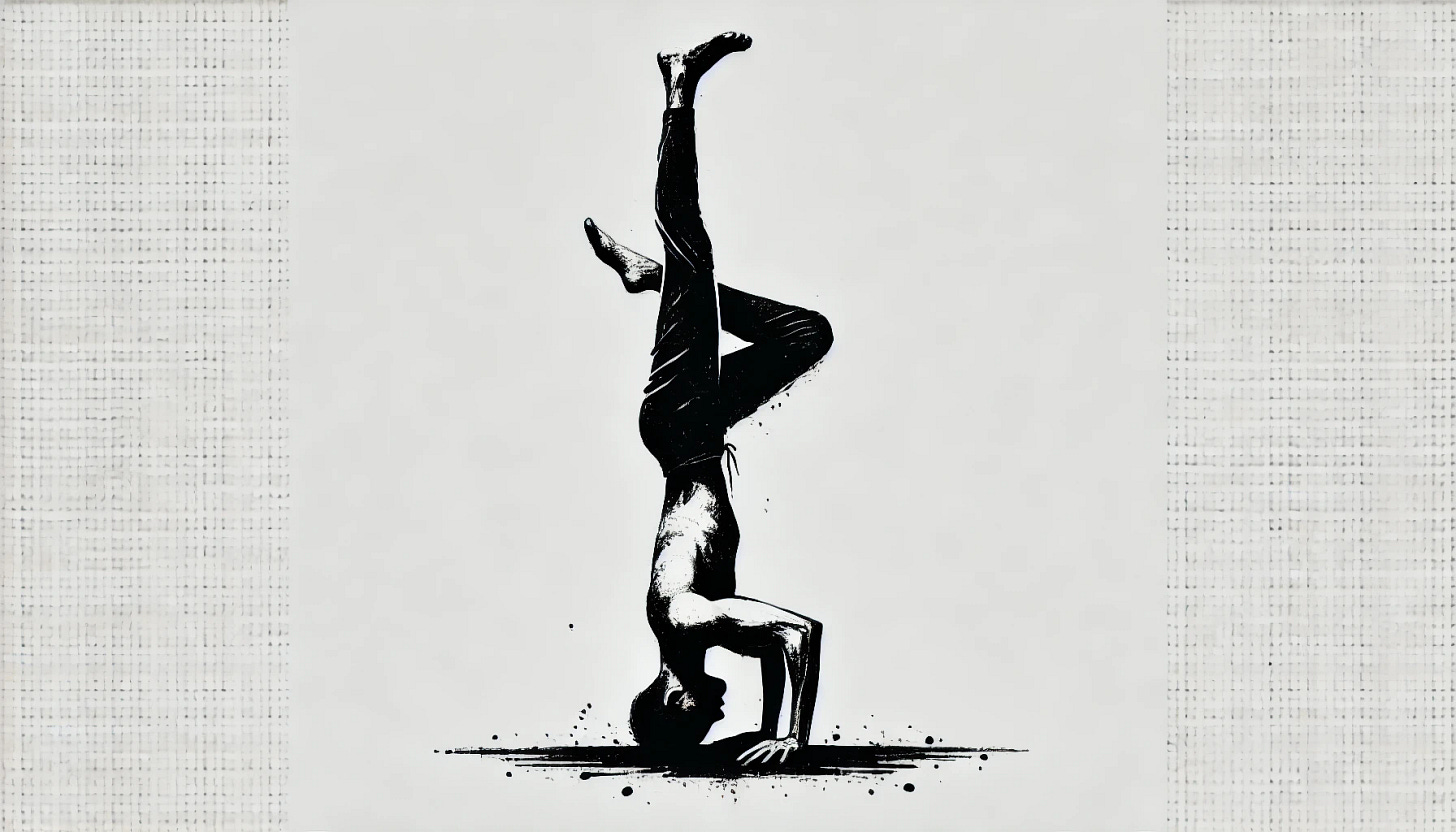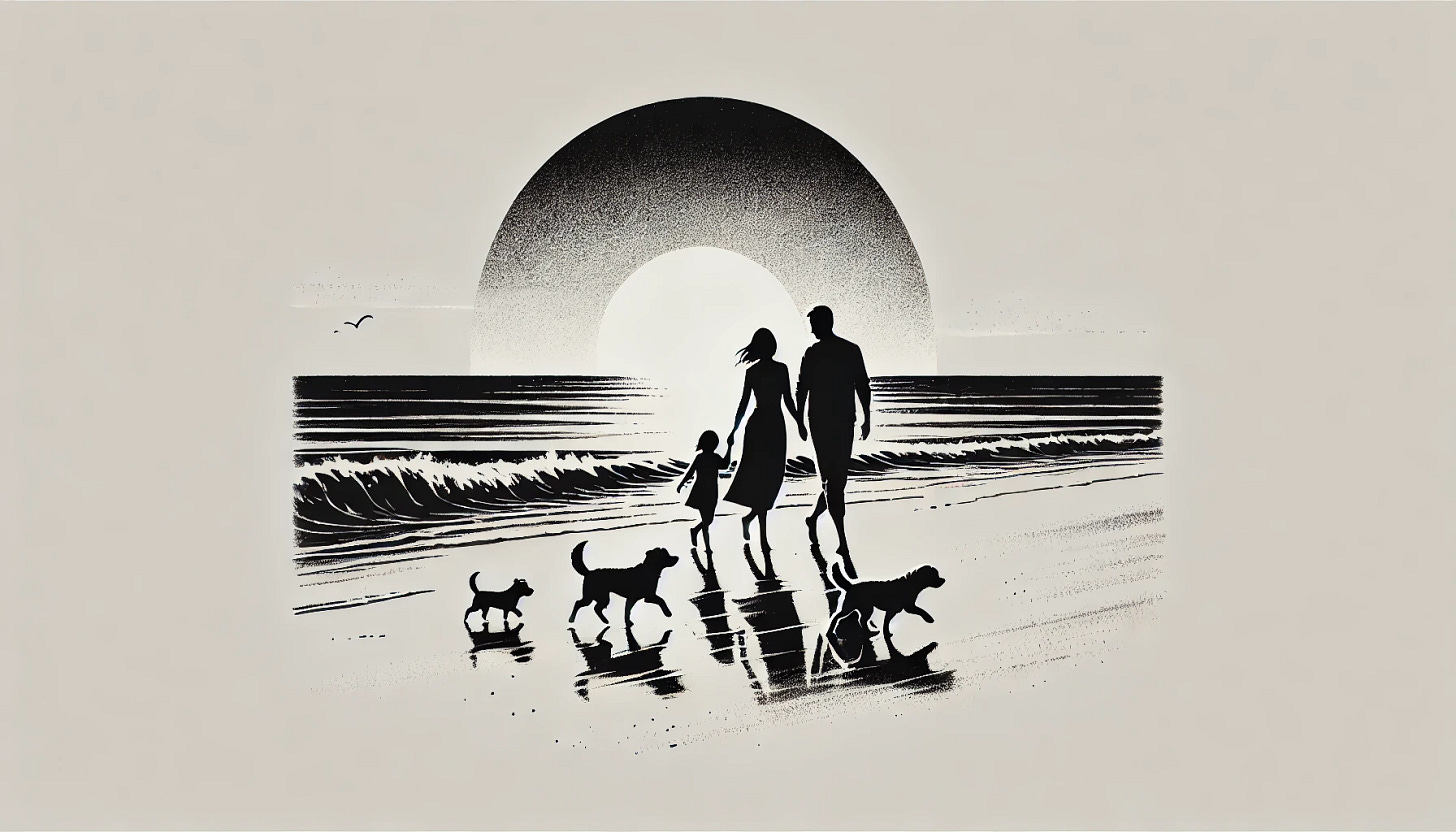Memories Are Made Now
Sutra 11: पूर्वानुभूतविषयासंप्रमोष: स्मृति: । — When a mental modification of an object previously experienced and not forgotten comes back into consciousness, that is memory.
The fifth of the 5 vrittis (mental modifications) — memory.
Pūrvānubhūta-viṣayāsampramoṣaḥ smṛtiḥ
When a mental modification of an object previously experienced and not forgotten comes back into consciousness, that is memory.
Remember (hah) that Patanjali is laying out categories to characterize the different types of fluctuation we experience in our minds. Literally, modifications of the mind-stuff.
Now that we have all five let’s have a look at them together.
Right knowledge
Misconception
Imagination
Sleep
Memory
Does it feel complete? Actually think about it for a moment.
— do you look at this list and think: “yes that is the totality of what happens in my mind”?
I have to admit that personally, when I see that list, I don’t immediately relate those categories to my own mental experiences. There’s just no strong visceral connection to them that conjures up clear examples of what each is like.
On the other hand, tell me that there are 7 days in a week and they are called Sunday, Monday, Tuesday through Saturday…I totally get it. Each day has it’s own feel and set of associations. Sometimes a Saturday feels like a Sunday, sometimes Wednesdays are insufferable and Thursdays are occasionally thirsty.
So why aren’t these 5 categories of thought more intuitive?
Most of the time we are thinking, we don’t realize we are thinking.
If we are in “typical” states of mind, naming the thought forms is like being inside of a box and having someone tell you the color of the box’s exterior. Easy to see from outside, but not super useful from inside.
That’s why practices like yoga were devised — to allow us to examine the thought forms more objectively, begin to perceive them clearly, and become generally more aware of their nature.
And it is a practice.
It’s something that has to be repeated over and over to be sustainably impactful.
Repetition is the reason why I have a steady idea of what “Wednesday” is, can describe it to you, and could probably guess when it’s Wednesday even if I hadn’t seen a calendar in a while.
I’m 30 years old, which is approximately 11,000 days. If I only count from 10 years old (which is when I was probably beginning to be acutely aware of which day of the week was which) that’s about 7300 days. That means I’ve experienced each day of the week at least 1,043 times while being more or less aware of it’s name.
So here’s the question:
How many times have you experienced a memory while being aware that it was a memory?
Probably way less than 1,000 days worth.
There are the times you actively seek to remember something, forming a new thought or action based on what you can recall from past experience:
where you left your keys
which house has your friend lives in
And there are times a memory is triggered by some present experience, suddenly re-experiencing aspects of the past during the present moment:
the smell of seaweed reminds you of beach trips as a child
the taste of pistachio ice cream reminds you of your first date
But there are also all the times the mind turns over past events, ruminating on what was said / done, mentally replaying scenarios, or just repeating something that got lodged deep in your brain:
how the blue Subaru that cut you off in traffic
how weird the last episode of Severance was
how did that song go? Da da duh duh…
Seriously though — the amount of time I’ve spent in my 11,000 days singing a song over and over in my head…
I can’t put a number to it of course, but here’s the nut-kicker: would it be more or less than I’ve spent thinking about love?
ask me what the soup nazi says in Seinfeld? I can tell you line for line, no problem.
ask me what my wife told me to get at the grocery store this morning? Nope…crickets.
I’ll come back to this. Anyways, here’s where this gets interesting from a yoga perspective —
How can you tell when what you’re experiencing in your mind is a memory vs. imagination?
The answer might feel obvious, like: “well I just know…memories actually happened and imagination didn’t”.
But when it really comes down to it, can you describe what aspects of a memory you are noticing that make it distinct from something you completely made up?
— think about right knowledge vs. misconception again…
The example is seeing a snake coiled in the grass. If it’s a snake, you are in a state of right knowledge. If it’s actually a rope, you are in a state of misconception.
However, in both scenarios, your mind is experiencing “snake”.
And there are measurable results to this experience. The pulse may quicken, adrenals begin firing, pupils dilate, muscles tense — preparing to run or otherwise evade the perceived threat.
So we can conclude that, regardless of accuracy, our perception of reality has a meaningful affect on our experience of reality.
In asana practice, we are aiming to experience our movement and bodies as they truly are.
During a flow, memory (and it’s effects on the present) can surface many times.
Maybe you tore your ACL in your right knee 10 years ago, and even though you had surgery and did all the rehab, you still tend to put more weight on your left foot and avoid deep lunges on the right.
As a result, perhaps you subconsciously go deeper on the left lunges to compensate for what you perceive as “lack of ability” on the right, instead of patiently matching effort on both sides. Perhaps you end up straining your left knee in too deep of a lunge since you expected it to have more capacity than it did.
Maybe you used to rock at headstands and could chill in a tripod headstand for a couple minutes, and even though you haven’t done one in a long time you decide to zip right into the pose without preparing.
As a result, perhaps you hurt your neck! Or, crash into your neighbor, hurting their neck. Maybe you try and can’t quite get your legs up, so you end up feeling frustrated and embarrassed moving into the next poses.
The simple cue to follow for your practice is to bring a beginner’s mindset.
You’ve done warrior 2 hundreds of times. But this time, try to experience it as if for the very first.
In an absolute sense, it’s obviously impossible. Your current experience is always going to be somewhat intervened upon by past impressions (unless you’ve totally escaped the mind and become a yogic sage). Even the first time you did “warrior 2” you had some prior experience holding your body in some form of posture that you probably compared it to, one way or another.
But in a practical sense, you’ll find that it’s quite possible.
Think about the characteristics of the beginner’s mindset, and invite them into your own experience. For me, all it really boils down to is whether or not you carry expectations with you into the moment of experiencing.
The first time you bend that knee and raise those arms, you don’t really know how it’s going to feel, so you just feel it (at least to a much higher degree than you might once your thoughts about how it ought to feel start to calcify over your perception of how it does feel).
When you do bring a beginner’s mind to your practice, the flow becomes one big reference point for becoming familiar with the 5 vrittis.
If you try to simply be aware of the breath, you can see the moment when that catchy song impinges on your consciousness.
Inhale, exhale, inhale — “sing us a song you’re the piano man!”
When we are still in the box of the thinking mind, maybe you continue on — “sing us a song, toniiiight!” and suddenly you’ve been breathing for a while and had no attention to it.
But if you catch that moment, notice it, and come back to the breath — now you’re outside of the box. You can see the color and texture of it, and mark it with a pen: “memory”.
The same goes for the other 4:
I feel steady in my extended side angle, I think I have more space to explore, so I’ll try for a bind — can I breathe? Yes. Ok, right knowledge.
I’m in warrior 3, my leg feels like it’s parallel to the ground — take a peek in the mirror? Nope, too high. Ok, misconception.
I’ve never put my foot on my head before in dancer’s pose — I’m picturing myself with my foot on my head, straining to get it closer, instead of noticing how my hamstring feels like it’s going to tear. Ok, imagination.
At the end of the flow I’m settled in corpse pose and I let me breathing come naturally, aiming to just be in my space passively without engaging — suddenly I’m startled awake. Ok, sleep.
The more time you spend being aware of each kind of thought, the more familiar you’ll become with their unique qualities.
As a result, you’ll become more able to recognize which is which during your daily life.
That’s where the power of this practice becomes clear…
If our perception of an experience (whether clear or not clear) is itself a determining factor for the quality of that experience, then we are literally learning how to determine the nature of our memories (accurate or inaccurate, empowering or oppressive).
Generally, I’ve heard memory addressed in yogic contexts mainly in terms of identifying/interrupting intrusive thoughts or rooting out present misconceptions formed by basing decisions off memories that are no longer correlated to reality.
Super useful, don’t get me wrong.
But I want to close this reflection by considering the other end of that spectrum.
When we look back on our lives, the things we remember very well often feel quite absurd. Why can I, to this day, remember the exact channel that Barney was on local TV — but not remember the exact last words my mother said to me?
As a result, I think most of us tend to throw up our hands in defeat, thinking “well it’s a crapshoot” or “hindsight is 20/20”. You never seem to know the core memory while it’s forming.
But the truth, as usual, is much more blunt.
Where you choose to place your attention determines your experience of reality.
Duh.
But think about this in the context of memory.
If, as I’m walking down the beach with my wife and our son, I’m lost in thought ruminating on my recent memories of how work went that day — that becomes my primary experience of the moment.
Sure, the sand is there. I can vaguely sense the sun on my shoulders. The sound of her voice is there, and the mischievous look in his eyes when he grabs at my sunglasses is too. But if my attention isn’t on those things, they are probably beneath layers of “I wish that project had gone better” or “I need to hire a new editor” or “sing us a song you’re the piano man!”. Then its no surprise when that beach walk fades into the void of the innumerable lost experiences cast from the limited amount of gray matter memory space I have in my skull.
Perhaps we should give just as much effort towards noticing the things now that are becoming memories as we do towards noticing when memories intervene with the present.
And I’d argue that the things worth having as memories are always found right in front of you.
I think we all know that certain eras or periods of our lives end up having a “feel” to them when we look back to remember them.
You are, right now, determining how that experience will be.
Memories are made now.
So learn to be here, now.






